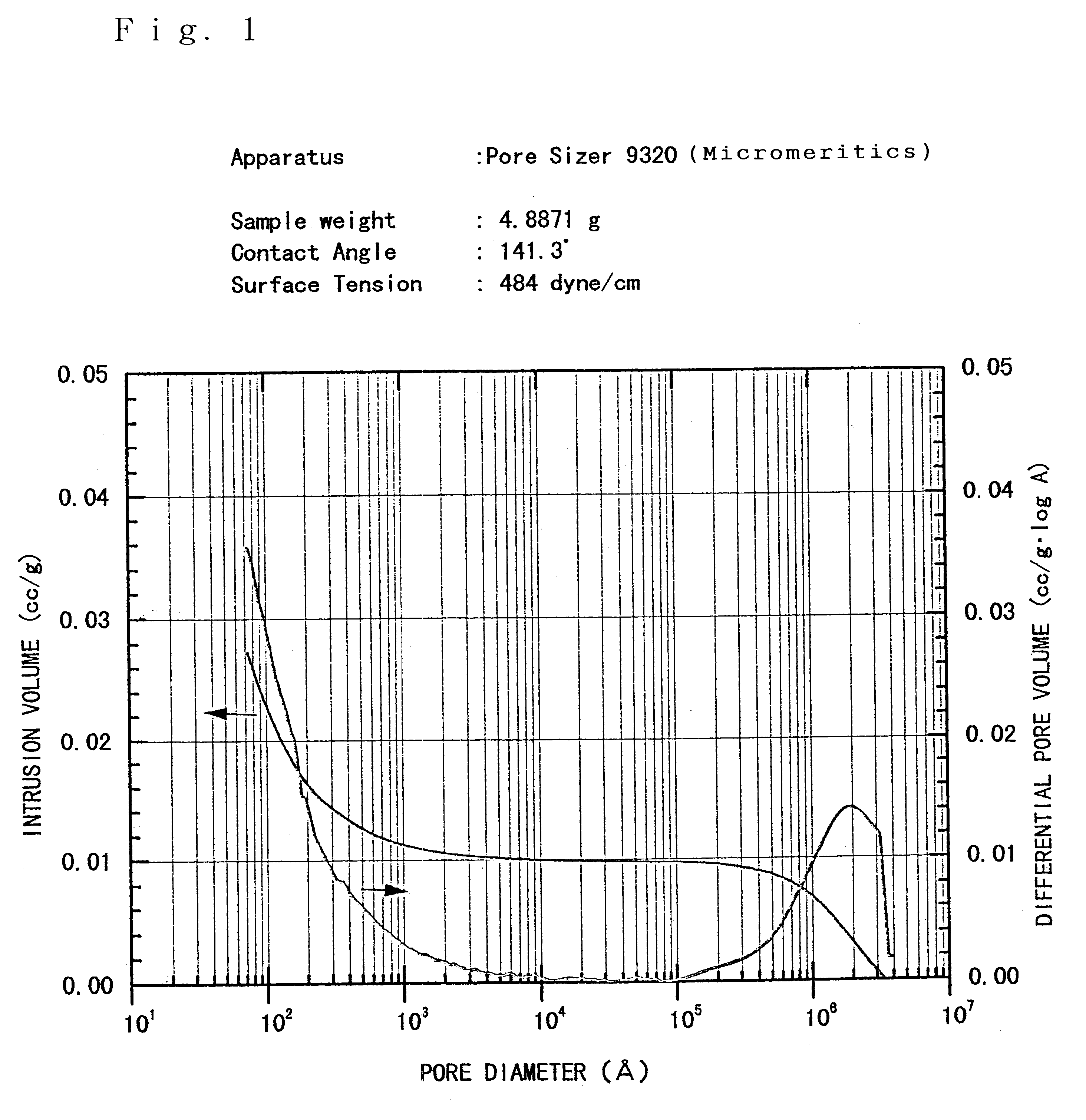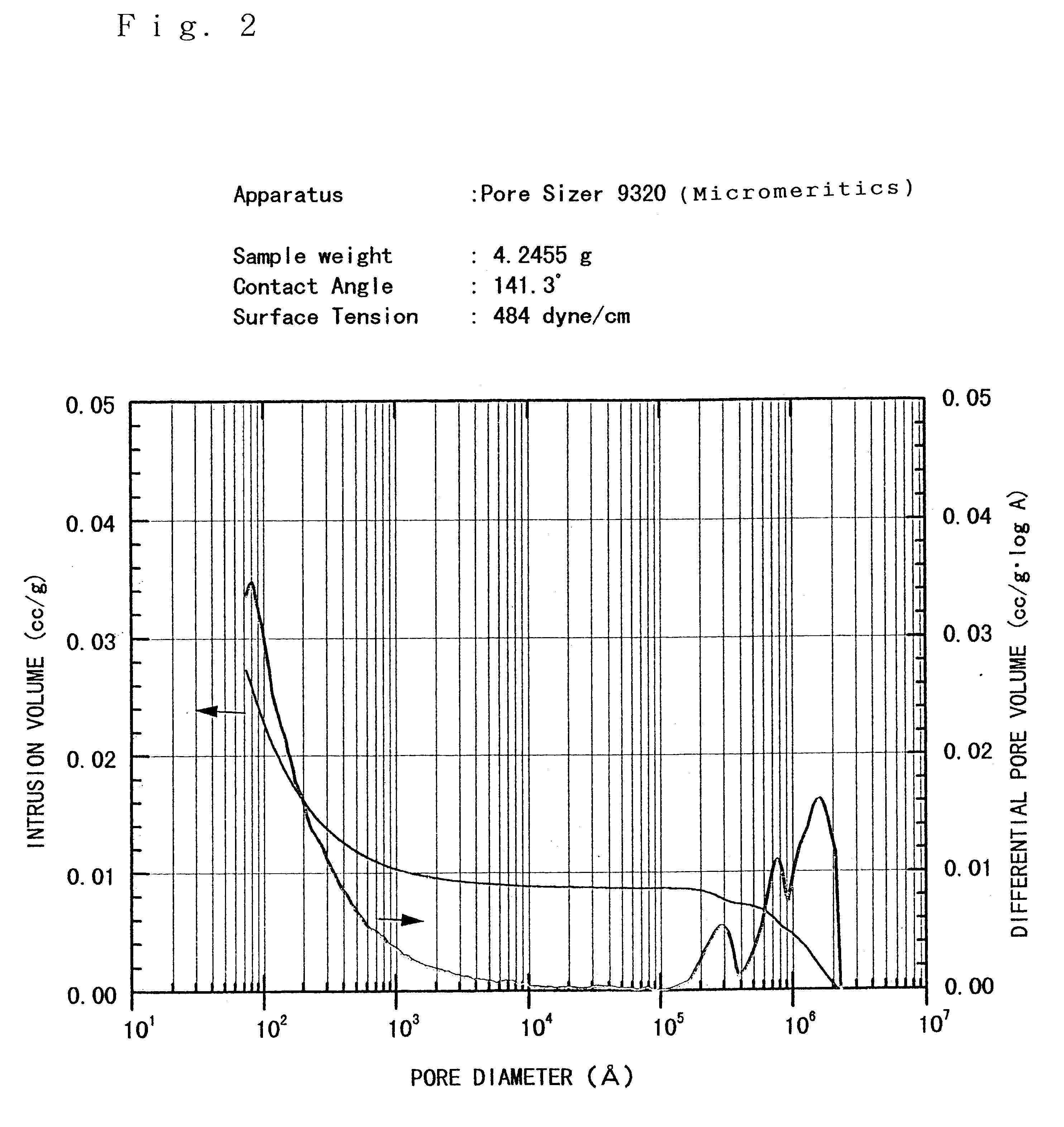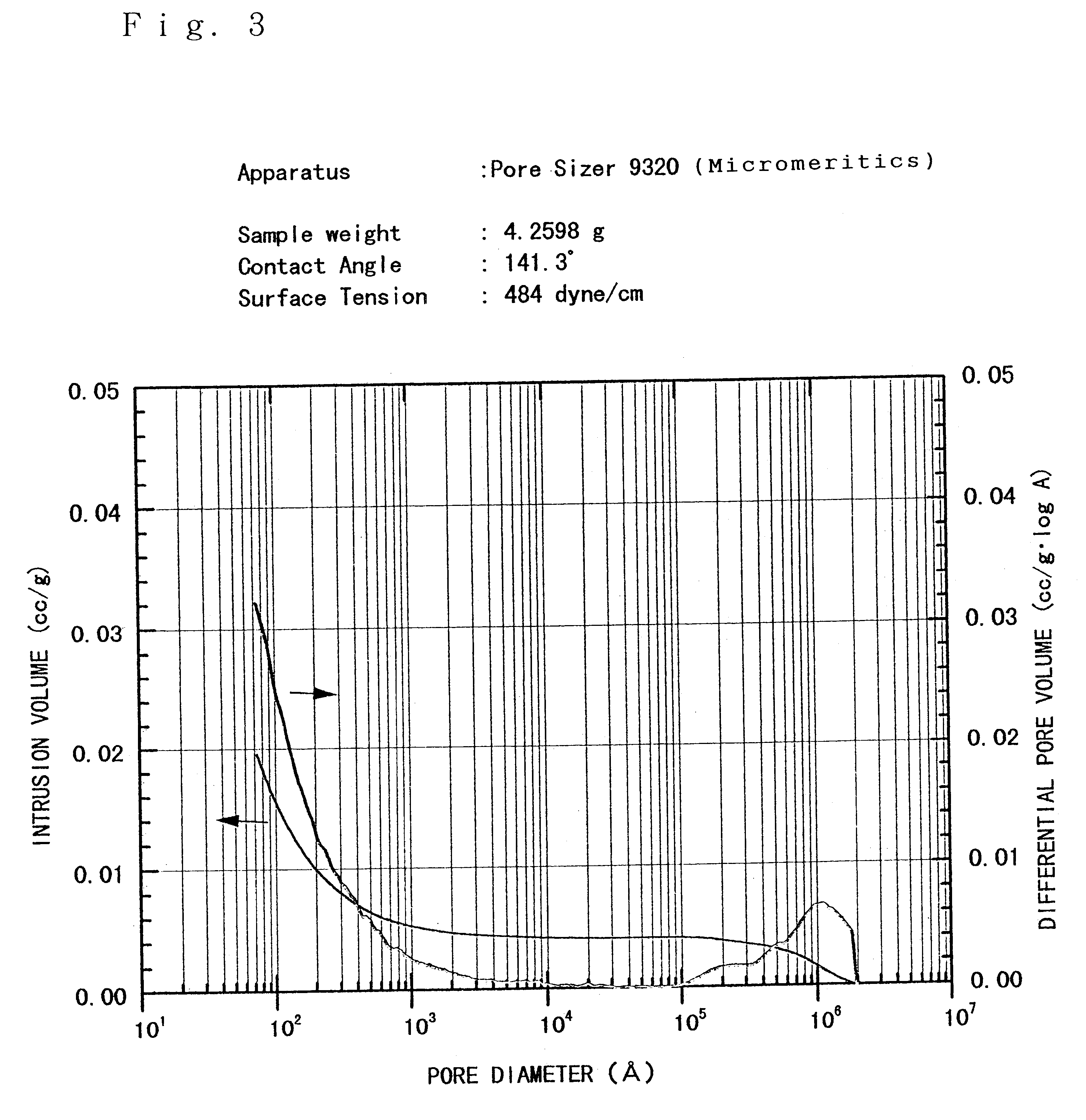Saponified ethylene-vinyl acetate copolymer pellets and method for their production
a technology of ethylenevinyl acetate and copolymer pellets, which is applied in the direction of monocomponent synthetic polymer artificial filaments, movable spraying apparatuses, textiles and paper, etc., can solve the problems of deterioration of dimensional accuracy such as the accuracy of form and thickness, poor feedability of evoh ill pellets for melt molding, and compromise of gas barrier properties under high humidity conditions. , the effect of reducing the number o
- Summary
- Abstract
- Description
- Claims
- Application Information
AI Technical Summary
Benefits of technology
Problems solved by technology
Method used
Image
Examples
example 1
A solution of EVOH [ethylene content 35 mol %, degree of saponification 99.5 mol %, MI 12 g / 10 m in(210.degree. C., load 2160 g)] in a mixture of water and methanol [H.sub.2 O / MeOH=40 / 60, by weight] (EVOH concentration 40%) was extruded from a cylindrical nozzle in a strand form at a rate of 10 kg / hr into a coagulation bath composed of 5% methanol and 95% water at 5.degree. C. The extrudate was allowed to contact the coagulation bath for 60 seconds and the strand obtained was withdrawn from the bath using a take-up roll disposed at the downstream end of the coagulation equipment.
The methanol content (A) of the solvent in said EVOH solution was 60%, and substituting the above ethylene content value (E=35 mol %) into the relation (1) given in the text gives 48.5.ltoreq.A.ltoreq.73.5. Thus, this methanol content (A) satisfied the relation (1).
The strand was then cut with a cutter to give white porous pellets measuring 3.8 mm in diameter and 4 mm long. Those pellets were rinsed with war...
example 2
A solution of EVOH [ethylene content 42 mol %, degree of saponification 99.6 mol %, MI 8.0 g / 10 min (210.degree. C., load 2160 g)] in a mixture of water and methanol [H.sub.2 O / MeOH=25 / 75, by weight] (EVOH concentration 36%) was extruded from a cylindrical nozzle in a strand form at a rate of 10 kg / hr into a coagulation bath composed of 5% methanol and 95% water at 5.degree. C. The extrudate was allowed to contact the coagulation bath for 80 seconds and the strand obtained was withdrawn from the bath using a take-up roll disposed at the downstream end of the coagulation equipment.
The methanol content (A) of the solvent in said EVOH solution was 75%, and substituting the above ethylene content value (E=42 mol %) into the relation (1) given in the text gives 66.35.ltoreq.A.ltoreq.91.35. Thus, this methanol content (A) satisfied the equation (1).
The strand was then cut with a cutter to give white porous pellets measuring 3.8 mm in diameter and 4.0 mm long. Those pellets were rinsed wit...
example 3
A solution of EVOH [ethylene content 30 mol %, degree of saponification 99.6 mol %, MI 8.1 g / 10 min (210.degree. C., load 2160 g)] in a mixture of water and methanol [H.sub.2 O / MeOH=60 / 40, by weight] (EVOH concentration 36%) was extruded from a cylindrical nozzle in a strand form at a rate of 10 kg / hr into a coagulation bath composed of 4% methanol and 96% water at 3.degree. C. The extrudate was allowed to contact the coagulation bath for 120 seconds and the strand obtained was withdrawn from the bath using a take-up roll disposed at the downstream end of the coagulation equipment.
The methanol content (A) of the solvent in said EVOH solution was 40%, and substituting the above ethylene content value (E=30 mol %) into the relation (1) given in the text gives 35.75.ltoreq.A.ltoreq.60.75. Thus, this methanol content (A) satisfied the relation (1).
The strand was then cut with a cutter to give white porous pellets measuring 4.2 mm in diameter and 4.5 mm long. Those pellets were rinsed wi...
PUM
| Property | Measurement | Unit |
|---|---|---|
| Percent by mass | aaaaa | aaaaa |
| Pore size | aaaaa | aaaaa |
| Thickness | aaaaa | aaaaa |
Abstract
Description
Claims
Application Information
 Login to View More
Login to View More - R&D
- Intellectual Property
- Life Sciences
- Materials
- Tech Scout
- Unparalleled Data Quality
- Higher Quality Content
- 60% Fewer Hallucinations
Browse by: Latest US Patents, China's latest patents, Technical Efficacy Thesaurus, Application Domain, Technology Topic, Popular Technical Reports.
© 2025 PatSnap. All rights reserved.Legal|Privacy policy|Modern Slavery Act Transparency Statement|Sitemap|About US| Contact US: help@patsnap.com



